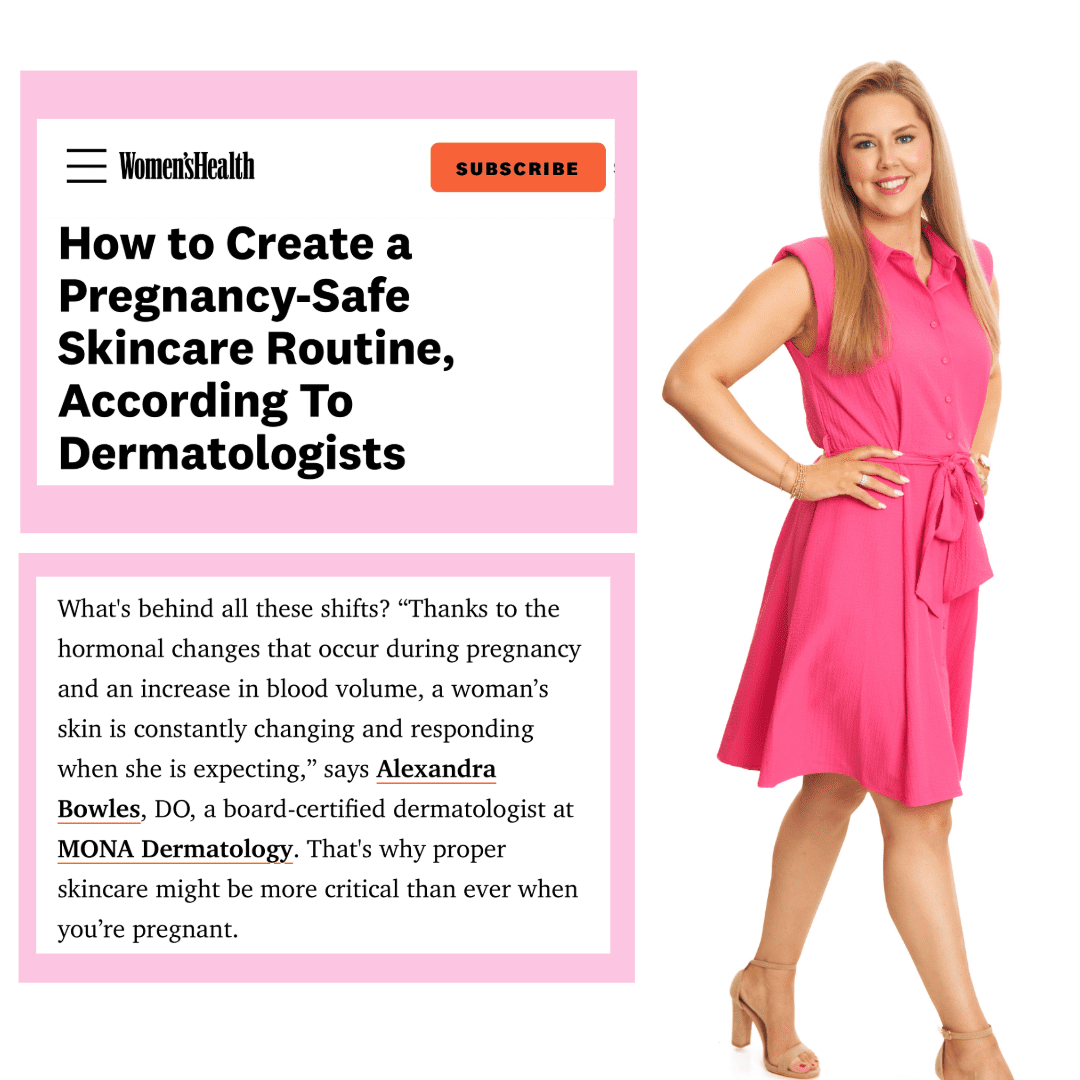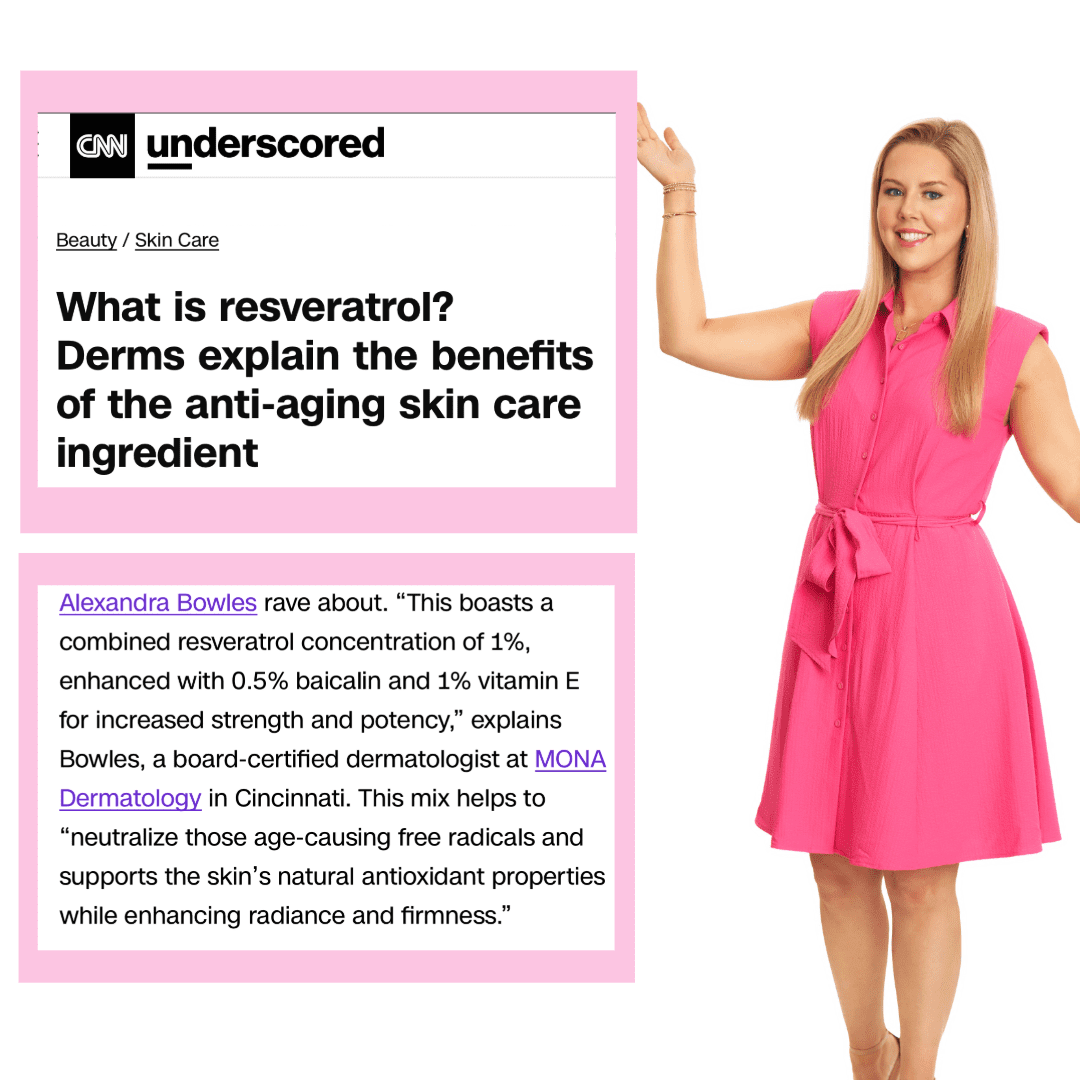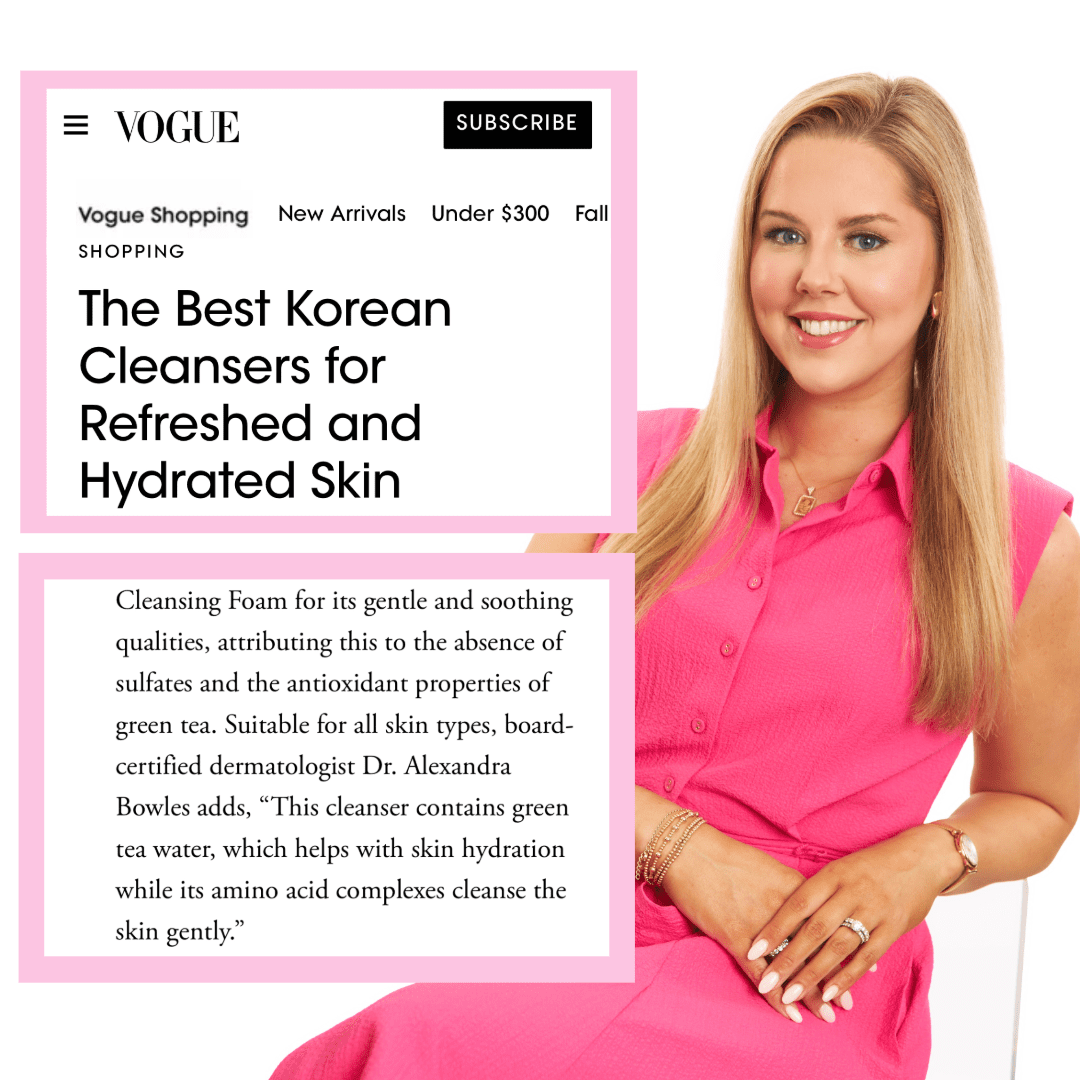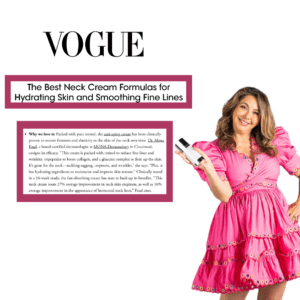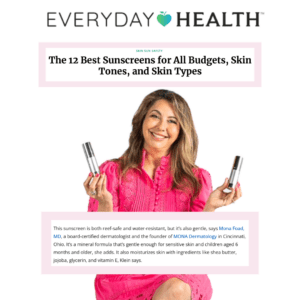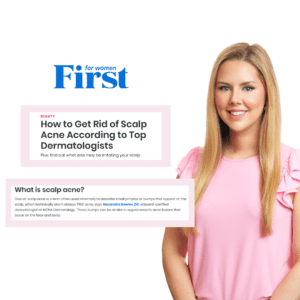Best Serums for Dry Skin | Featured in Allure
Mona S. Foad, M.D., MHS FAAD, and Dr. Alexandra Bowles were recently featured in Allure, where they share their tips on the best serums for dry skin and all-day hydration. Read more about how to implement this into your skincare routine to gain long-lasting hydration.
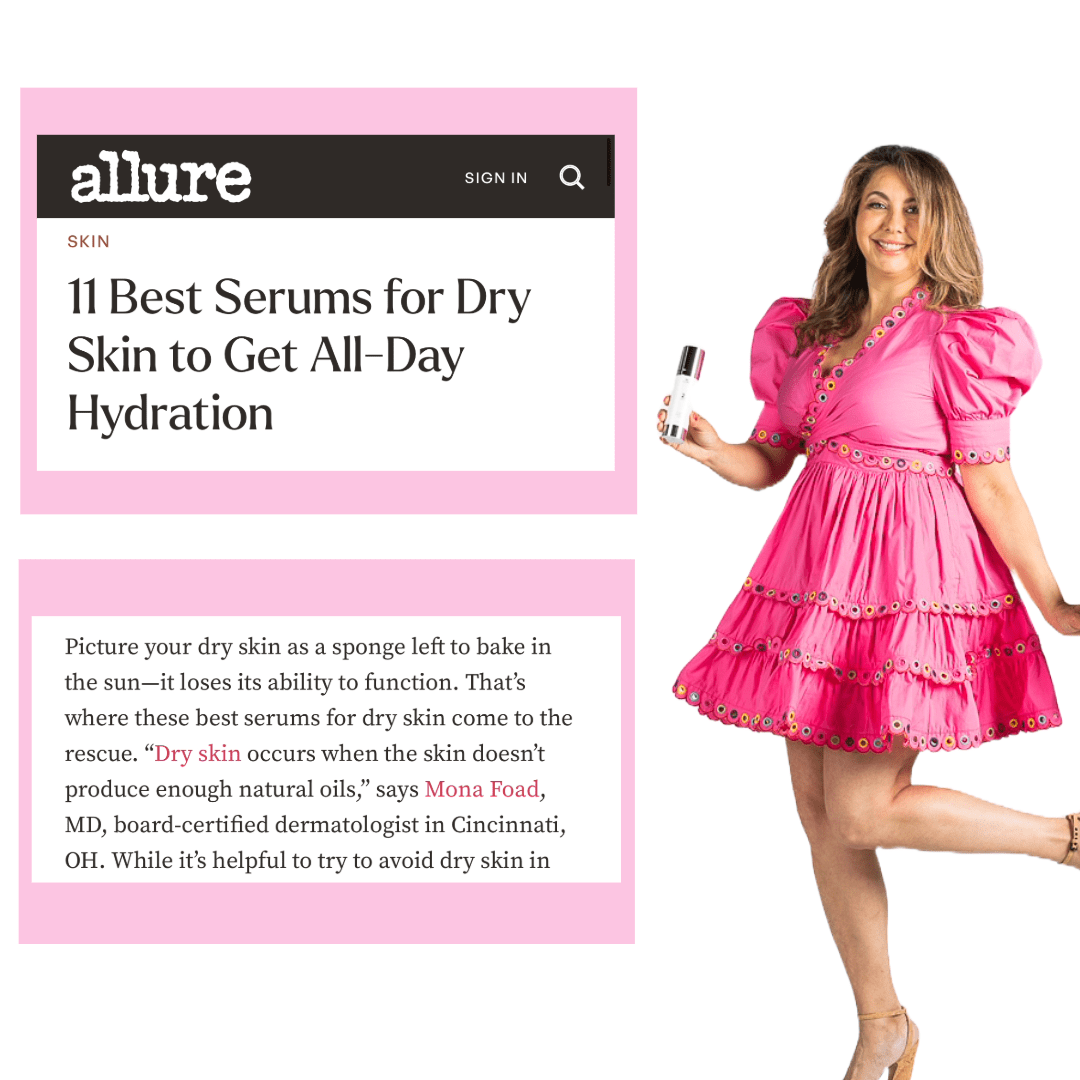
What causes dry skin? What’s the difference between dry and dehydrated skin?
Dr. Mona: Dry and dehydrated skin are not the same. Dry skin is a specific skin type in which your skin does not produce enough oil. This can be due to several factors, including genetics or age. Dry skin tends to feel rough, tight, or flaky and you need to be careful with the types of products you use on your skin. Dehydrated skin on the other hand happens when your skin cells do not have enough water content. Water makes up a significant part of our body and our skin cells actually need that water to stay hydrated. Your skin can become dehydrated if you have not consumed enough water or if you are using dehydrating agents on your skin. Dehydrated skin can happen even if you have oily skin.
Dr. Alexandra: Dry skin and dehydrated skin have different underlying causes. Dry skin occurs when the skin doesn’t produce enough natural oils. This can simply be genetic, or when you’re in colder weather, or even from washing your face too much. Dehydrated skin is a temporary condition that is caused when your body loses more water than it is taking in. Believe it or not, even oily skin can become dehydrated. Dehydration can also be caused by colder weather or overuse of certain skincare products.
What ingredients should you look for in a serum for dry skin?
Humectants & Glycerin
- “Using a humectant is a great way to hold onto water in your skin. These agents are what we call “water grabbers” and they attract and hold onto water. Glycerin is another humectant that also helps attract water but can also be used as an occlusive to trap the moisture in your skin. It is commonly used in moisturizers for this reason.” – Dr. Mona
- “Urea is a humectant that attracts moisture and helps soften rough, dry patches.” – Dr. Alexandra
Hyaluronic Acid:
- “Hyaluronic acid is a great choice because it can hold up to 1,000 times its weight in water, easily giving you the hydration that you need. Hyaluronic acid is naturally occurring in our skin but as we get older these levels decrease, making it an even more important ingredient to incorporate into our skincare routine.” – Dr. Mona
- “Hyaluronic acid is something that is naturally found in our bodies. It is a great hydrator as it works as a humectant and pulls water into the skin. I recommend that everyone use an HA product!” – Dr. Alexandra
Ceramides:
- “Ceramides are also naturally occurring fatty acids that help to strengthen your skin’s barrier and lock in hydration as well. Maintaining a healthy skin barrier is important to establishing healthy skin.” – Dr. Mona
- “Ceramides are another great component of our natural skin and play a large role in moisture retention. Ceramide-rich products are a staple in skin hydration.” – Dr. Alexandra
Other Ingredients:
- “Aloe vera is a soothing option that not only hydrates but also helps calm irritation. Shea butter holds fatty acids and works to lock in moisture and repair the skin’s natural barrier. Peptides can also be great for boosting the skin’s strength and elasticity, helping to reduce dryness over time. Licorice root extract helps soothe and brighten the skin, which is perfect for sensitive, dry areas.” – Dr. Alexandra
- “If you are concerned about preventing environmental damage from UV rays or pollution, adding an antioxidant into your skincare routine is vital. Antioxidants such as vitamins C and E and many others can help to protect your skin from that damage. If you are on the dry side, look for ones that have a more emollient or oil base.” – Dr. Mona
What are the specific benefits of serums when you have dry skin? How do serums differ from other skincare products for dry skin?
Dr. Mona: Serums pack a lot of active ingredients that go deeper than regular moisturizers or oils, making them a staple in a routine for dry skin. They even have smaller molecules, so they can penetrate the skin and hydrate from within, rather than just sitting on the surface. Serums with hyaluronic acid and peptides can boost hydration in dry skin rather than just using moisturizers or oils that sit on top of your skin.
Dr. Alexandra: Serums offer great benefits for dry skin because they’re designed with ingredients that hydrate and repair the skin. Unlike moisturizers, which focus more on creating a protective layer on the surface, serums can get deeper into the skin. This prevents dryness at the source. Serums absorb quickly without leaving residue. This makes them a great first step before applying your favorite moisturizer or oil to lock everything in.
How does serum fit into your routine and how often? Can serums be used with other skincare products?
Dr. Mona: Apply serums after cleansing but before your moisturizer. They soak into the skin quickly and activate all the ingredients into the skin. You can use serums up to twice a day, in the morning and at night. In the morning, you should apply it before SPF, and at night, before any heavier creams. Serums work well with other products—just remember to layer using thinner products before thicker ones. Think thin to thick.
Dr. Alexandra: Serums are best applied right after cleansing and toning, before your moisturizer. Since they’re lightweight and designed to absorb quickly, putting them on before heavier products helps them soak deeper into your skin. You can use a serum a few times a day and they layer really well with other products.
Top Picks for Dry Skin Serums:
#1 Choice by Both: SkinMedica HA5 Hydra Collagen
- Dr. Mona: This serum combines five forms of hyaluronic acid to not only increase hydration but also help your skin build more of its own hyaluronic acid. This newer formulation provides instant hydration and smoothness that lasts up to 48 hours, plus the Advanced VITISENSCE® Technology helps to replenish natural humectants, including HA, and helps restore the skin’s hydration reservoir. This is good for all skin types.
- Dr. Alexandra: Skinmedica’s HA product features five forms of hyaluronic acid plus a hydra collagen complex for immediate and long-lasting hydration. It is a lightweight cream-to-water serum that helps restore the skin’s natural hyaluronic acid. This is my own personal go-to HA product!
Other Serums:
- La Roche-Posay Hyalu B5 Hyaluronic Acid Serum – “This serum is gentle enough for sensitive skin and helps to repair the skin’s barrier. It combines concentrated pure hyaluronic acid to build hydration, madecassoside to repair the skin barrier, and vitamin B5 to help soothe and moisturize the skin.” – Dr. Alexandra
- CeraVe Hydrating Hyaluronic Acid Serum – “This serum is a great economical option because it combines hyaluronic acid with ceramides, making it a perfect serum to hydrate and restore your skin’s moisture barrier. Although this serum will not build your own hyaluronic acid, it is great daily option” – Dr. Mona.
- Dr. Alexandra agrees with this pick and adds: “Packed with both hyaluronic acid and ceramides, this affordable CeraVe product helps to refresh and bind moisture to the skin and keep it hydrated all day.”
- The Ordinary Hyaluronic Acid 2% + B5 – “This is definitely a more affordable option that gives good results at a lower price point. It helps to hydrate your skin without feeling too heavy. This helps to boost immediate daily hyaluronic acid and is good for all skin types” – Dr. Mona
- SkinCeuticals Hydrating B5 Gel – “This serum is a bit higher in price, but it’s worth it for an oil-free lightweight, refreshing feel and is a good option for acne-prone patients.” – Dr. Mona
- Neutrogena Hydro Boost Water Gel – “This serum-gel hybrid is a great option for dry skin. It’s super refreshing and absorbs quickly because of its high concentration of hyaluronic acid.” – Dr. Alexandra

